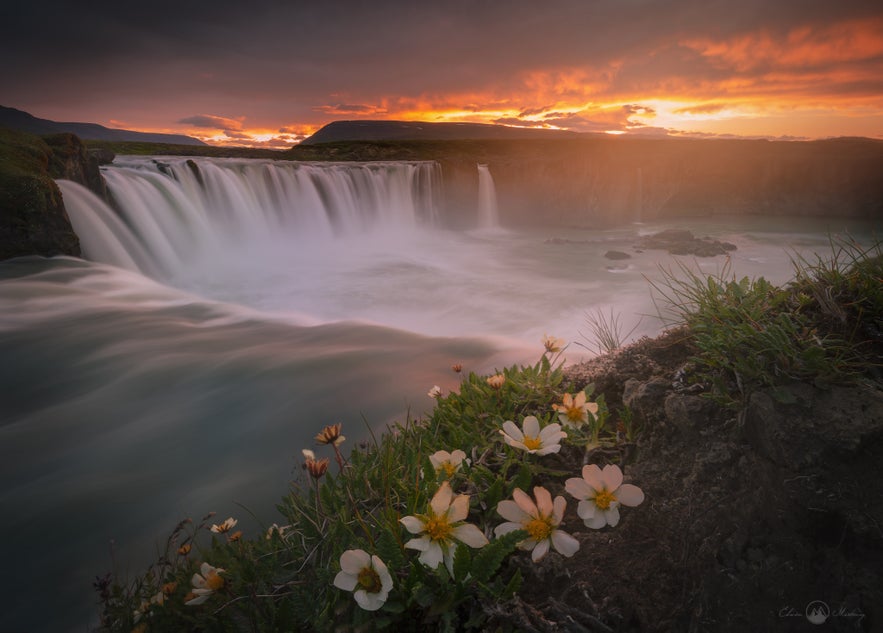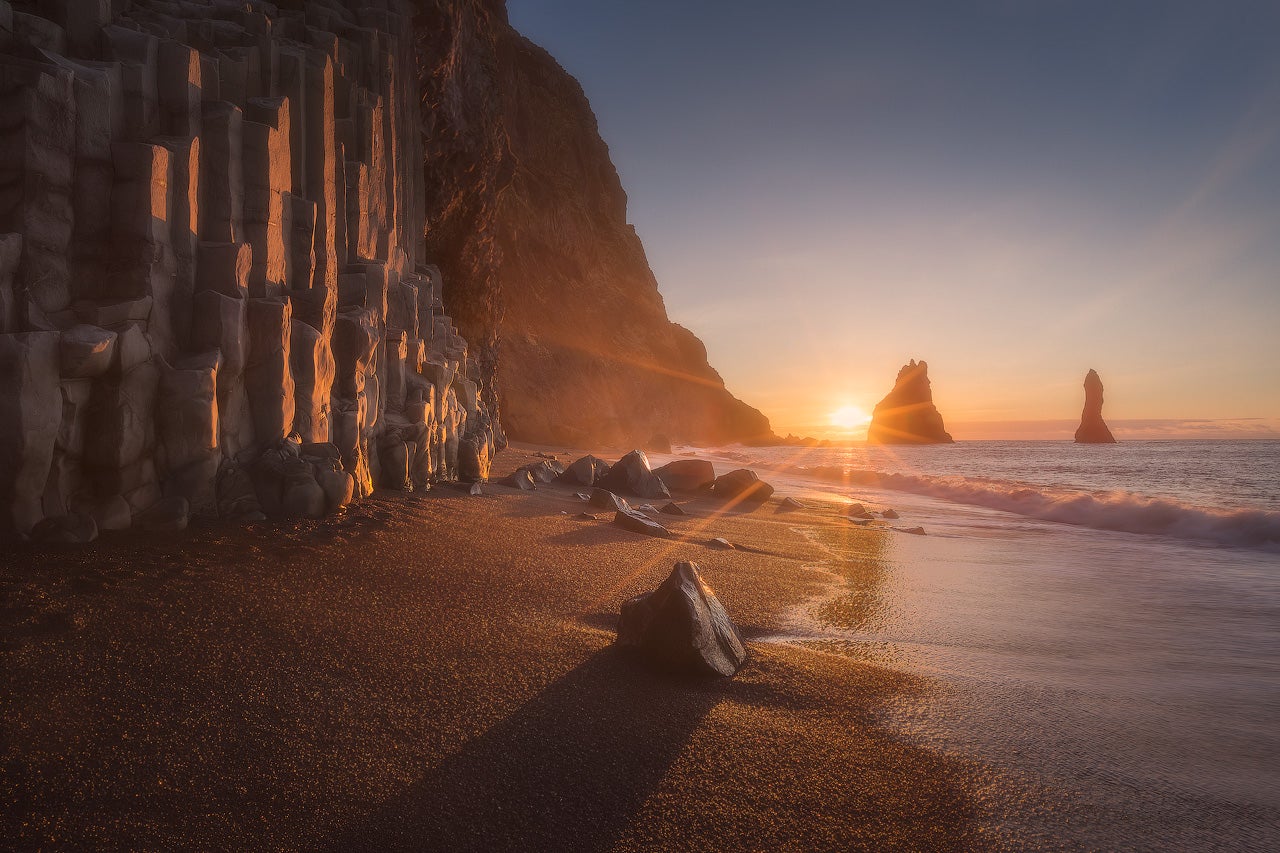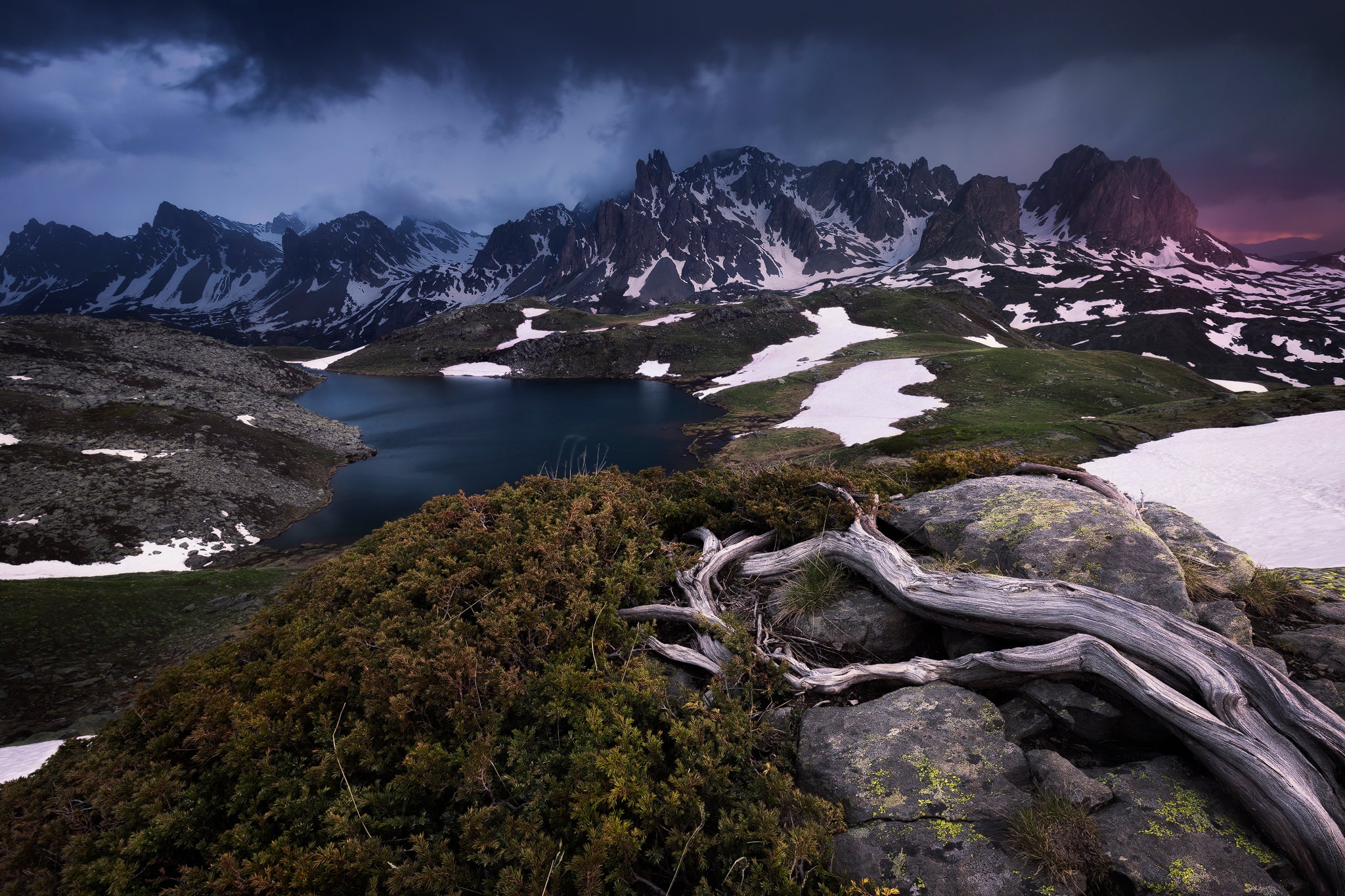
Travelling to a place like Iceland is usually very high on the bucket lists of landscape photographers all around the world. It’s not hard to see why, as there are spectacular scenes to be captured in the sprawling surrounds of nature that characterise this volcanic region. As soon as you visit this incredible country, you’ll find out very early on why it is often described as the ‘Land of Fire and Ice’!
- Learn about Horizontal Lines as a Compositional Tool in Photography
- Discover these 5 Composition Techniques That Will Improve Your Landscape Photography
- Check out this Ultimate Guide to Composition in Photography
Although most people set out to capture the immense natural beauty of Iceland in the best ways that they can, it can sometimes be difficult to convey exactly what you’ve seen. As a landscape photographer, how can you translate everything that you take in with your eyes into interesting photos that your audience will appreciate?
Finding, having or making a great composition is the golden key to landscape photography. While the rule of thirds is the most well-known photographic composition technique out there, sometimes you will need to step outside of the box for a truly stunning photograph.
When considering the breathtaking landscapes of Iceland, there are few photography techniques that you can use which are as powerful as the compositional S-curve. Read on to find out why, as well as how you can harness the power of the S-curve to improve your own landscape photography.
S-Curve Definition
The S-curve is a composition technique that can be used in many different genres of photography, though it is particularly useful for landscape photography. It is a type of leading line which, when used strategically, can greatly enhance your overall composition.
The reason that it is called an ‘S-curve’ is that this leading line takes on the shape of, you guessed it, the letter ‘S’.
 An S Curve formed by the Northern Lights and lines within the coastline. Photo by: 'Iurie Belegurschi'.
An S Curve formed by the Northern Lights and lines within the coastline. Photo by: 'Iurie Belegurschi'.
Curved Lines in Photography
When looking at a photograph or a piece of art, the human eye tends to follow along lines and other edges through the frame. Due to its shape, the S-curve is a very powerful visual cue that can help to guide the eye gracefully through a scene, pointing to important elements along the way.
This compositional technique takes your viewer on a visual journey, creating an added layer of interest that will immerse them in your photograph. As such, when most landscape photographers encounter an S-curve in nature, they get very excited as it’s a sure-fire sign of the possibility of capturing a truly amazing landscape picture.
 An S Curve formed by a path in the windswept grassy landscapes of the Snaefellsnes Peninsula. Photo by: 'Iurie Belegurschi'.
An S Curve formed by a path in the windswept grassy landscapes of the Snaefellsnes Peninsula. Photo by: 'Iurie Belegurschi'.
That’s because great landscape photographers know that S-curves within a composition will help to attract and to capture their audience’s attention!
S-Curves in Landscape Photography of Iceland
Curves within nature are quite common, particularly in Iceland. They exist within the landscape as meandering streams, patterns in the sand and even in the motion created by a long exposure of the waves receding around icebergs on the Diamond Ice Beach.
 S Curve formed by the receding waves at the Diamond Beach in Iceland. Photo by: 'Iurie Belegurschi'.
S Curve formed by the receding waves at the Diamond Beach in Iceland. Photo by: 'Iurie Belegurschi'.
You can even find them in trampled paths created by farmers and their livestock, or even in the undulating rhyolite mountains of the Icelandic Highlands on well-trodden hiking paths.
 S Curve formed by the red clouds and curvature of Sigöldugljufur Canyon in the Highlands of Iceland. Photo by: 'Iurie Belegurschi'.
S Curve formed by the red clouds and curvature of Sigöldugljufur Canyon in the Highlands of Iceland. Photo by: 'Iurie Belegurschi'.
Some waterfalls in Iceland form a natural S-curve, while roads in the black volcanic landscape can also take this very special form.
In fact, you can even find S-curves in the Northern Lights and on the Ring Road in Iceland!
A Powerful Visual Tool
The S-curve compositional technique can help your viewer’s eye to explore the scene that you’ve captured by taking them on a visual journey, which can even give your image a sense of overall rhythm.
The flow of rhythm in a landscape photo is important, as it can change the atmosphere that you are trying to convey.
 S Curve at Vestrahorn. Photo by: 'Iurie Belegurschi'.
S Curve at Vestrahorn. Photo by: 'Iurie Belegurschi'.
In most cases, S-curves are also a great way of demonstrating elegance, energy and force within your landscape photos of Iceland. They can make a static image more dynamic by creating a sense of movement, as well as by generating visual depth and perspective in an otherwise two-dimensional scene.
Improving Your Landscape Photography with S-Curves
The beauty of an S-curve is that you can use it simply as you would with a leading line into the scene, as a way of framing or separating other elements, or even by featuring it as the main subject or focal point of your composition.
Once you’ve found an S-curve in the landscape in Iceland, the first thing to consider is whether your composition will be in balance when you use it.
 S Curve formed by the sky meeting with the coastline at Vikjurfjara black sand beach. Photo by: 'Iurie Belegurschi'.
S Curve formed by the sky meeting with the coastline at Vikjurfjara black sand beach. Photo by: 'Iurie Belegurschi'.
Keep in mind that S-curves can lead into or out of a scene. They can also start somewhere at the bottom or the top of your frame, or even come out from the side.
The aim is to keep the elements within your frame in harmony with the S-curve, rather than tipping with too much weight to one of the edges. An unbalanced scene can create a sense of unease within your audience, making your overall image unappealing.
Direction of an S-Curve
The direction that the S-curve faces may also affect your overall composition by influencing how the eye is guided through the frame, which in turn can alter the atmosphere or mood of the landscape.
 A well-shaped S Curve at Godafoss waterfall in Iceland's north. Photo by: 'Iurie Belegurschi'.
A well-shaped S Curve at Godafoss waterfall in Iceland's north. Photo by: 'Iurie Belegurschi'.
Consider an S-curve that faces towards the right. In English-speaking countries, we tend to read from the left to the right. As such, the default position for the eye to begin with is at the lower left corner, following the S upwards in a natural curve until it finishes in the top right.
This type of motion creates a sense of perspective and depth, as though the viewer is being led away through the scene.
 A reversed S Curve, or a Z shape, inside an ice cave in Iceland. Photo by: 'Iurie Belegurschi'.
A reversed S Curve, or a Z shape, inside an ice cave in Iceland. Photo by: 'Iurie Belegurschi'.
However, if the S-curve is reversed, much like a 'Z' shape, then we will read it from the upper left corner, as our eyes gently travel downwards to the lower right.
This gives the sense that the leading line is coming towards the viewer and is particularly useful for capturing scenes such as the flow of water cascading forth from a waterfall.
Composing a Shot with an S-Curve
When lining up for a shot that involves an S-curve, make sure that the curve itself is free of distractions such as diagonal lines caused by tree branches or other debris that may lead the eye astray. Your composition will also look neater as a result.
S-curves within nature can be very subtle or even obvious. For your landscape photography in Iceland, ensure that the S-curve is not too gentle, so that it will catch your viewer’s eye.
If the S-curve is getting lost within your composition, then try positioning your camera at an angle that will accentuate the it and make it more obvious. This way, your audience will be able to place themselves more easily into the scene and to follow the leading line that you’ve captured with an added sense of perspective and depth.
By learning how to use S-curves effectively, you can harness the power of this photography composition technique to make your landscape photos of Iceland even more compelling. So while you’re travelling in Iceland, explore using different types of S-curves to see how they feel and examine exactly how they might change the overall dynamic of your shots. You might find yourself taking far more interesting compositions than you would have otherwise, without this amazing technique under your belt!
About the author: Serena Dzenis is a landscape photographer based in Iceland. You can find more of her work on her website or by following her on Facebook and Instagram.
Have you experimented with S-curves in Iceland? How did they affect your shots? Leave a comment below!












